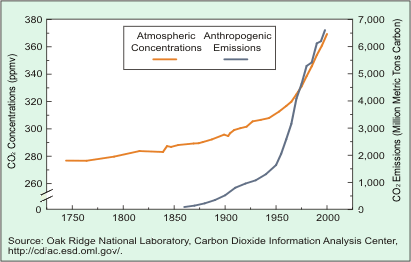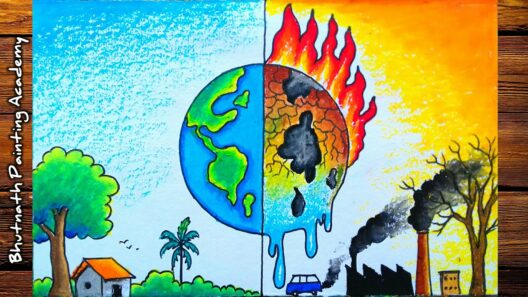Global warming has emerged as one of the most pressing challenges of our time, prompting a multitude of questions regarding its origins, progression, and potential mitigations. One critical inquiry pertains to the relationship between global warming and the Industrial Revolution, a pivotal era in human history that marked the transition from agrarian economies to industrialized societies. This discourse will explore whether global warming indeed commenced with the Industrial Revolution, examining historical contexts, industrial practices, and the resulting atmospheric changes.
To grasp the nuances of this discussion, one must first delineate what is meant by global warming. The term typically refers to the long-term rise in Earth’s average surface temperature, primarily attributed to the accumulation of greenhouse gases produced by human activities. Key greenhouse gases include carbon dioxide (CO2), methane (CH4), and nitrous oxide (N2O). To understand the evolution of these gases, it is essential to investigate pre-industrial climate conditions compared to the post-industrial landscape.
Before the dawn of the Industrial Revolution in the late 18th century, the Earth’s climate experienced fluctuations, largely driven by natural phenomena such as volcanic eruptions and solar radiation variations. During this period, which can be characterized by its relative climatic stability, human activities had a nominal impact on the atmosphere and climate. Agriculture, for instance, although significant in terms of land use, contributed relatively little to greenhouse gas emissions compared to the later industrial practices.
The Industrial Revolution, marking the period from approximately 1760 to the mid-19th century, ushered in unprecedented technological advancement and economic expansion. The widespread adoption of steam engines, mechanized textile production, and blast furnaces transformed industries and altered human society. However, these innovations came at a steep environmental cost. The reliance on fossil fuels, primarily coal, catalyzed a dramatic surge in the combustion of carbon-rich materials. This transition corresponds with a significant increase in CO2 levels, which is documented through ice core samples that reveal atmospheric concentrations prior to and following this pivotal era.
The ramifications of this industrial paradigm shift were profound. The late 19th century witnessed a startling rise in the global average temperature, a trend acutely documented by climate scientists. The connection between industrialization and greenhouse gas emissions is unequivocal; by the early 20th century, it became increasingly apparent that human activities were significantly influencing the climate system. The Intergovernmental Panel on Climate Change (IPCC) emphasizes that the current warming trend is unprecedented in at least the last 800,000 years, correlating directly with increased anthropogenic emissions.
Furthermore, the extraction and utilization of fossil fuels during the Industrial Revolution had far-reaching implications beyond mere temperature rises. Disruptions to natural carbon sinks, such as forests and wetlands, compromised the Earth’s ability to mitigate CO2 levels. Deforestation for agricultural expansion and urban development led to the release of stored carbon, exacerbating the greenhouse effect. This interconnection of industrial activity, land-use changes, and climate impacts underscores the systemic nature of environmental degradation initiated during this epoch.
While the Industrial Revolution represents a significant turning point in the narrative of global warming, it is crucial to acknowledge that the phenomenon of climate change is multifaceted and ongoing. Subsequent industrial activities, notably during the post-World War II economic boom, further intensified emissions, with the rise of the automobile industry, increased agriculture, and expansion of energy consumption perpetuating the cycle of warming. The dramatic uptick in global population and urbanization during the 20th century forced a re-evaluation of human-environment interactions, making it evident that the post-industrial era has continued to amplify the adverse effects of climate variability.
The discourse surrounding global warming also encompasses socio-economic elements and policy implications. Historical injustices tied to industrial growth, particularly in colonial contexts, often resulted in environmental exploitation that disproportionately affected vulnerable populations. This inequity persists today, as developing nations, which contributed the least to historical emissions, bear the brunt of climate change impacts. Addressing these disparities is paramount in the ongoing fight against climate degradation and highlights the complex interplay between industrialization, socio-economic status, and climate vulnerability.
In conclusion, the assertion that global warming commenced with the Industrial Revolution is substantiated by extensive scientific evidence and historical scrutiny. The intersection of technological innovation, fossil fuel utilization, and environmental consequence delineates a clear trajectory from the late 18th century to the present. Moving forward, acknowledging this history is crucial for formulating effective climate policies and fostering a sustainable future. Collective action, informed by a comprehensive understanding of the past, will be essential in combating the challenges posed by climate change and ensuring a balanced coexistence between humanity and the planet.








